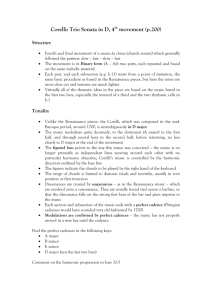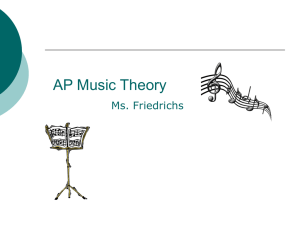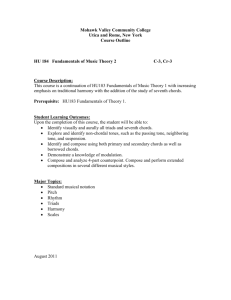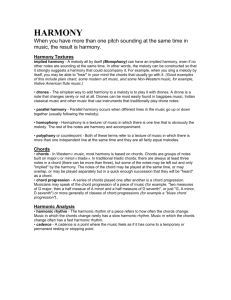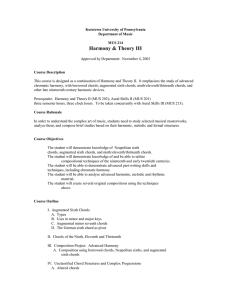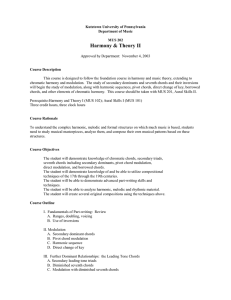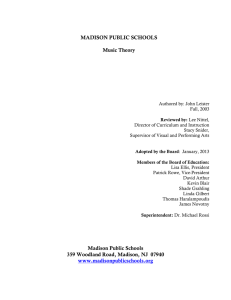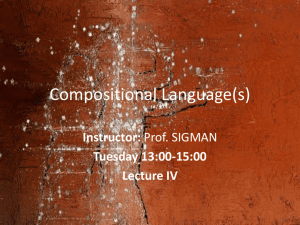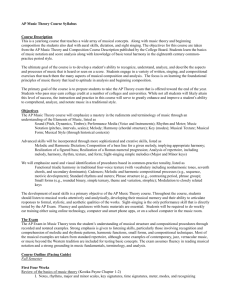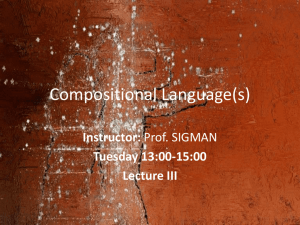presentation
advertisement
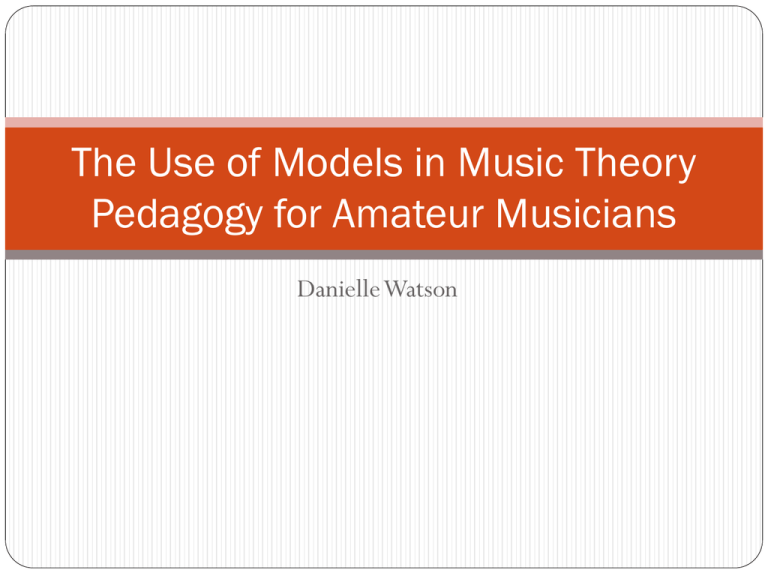
The Use of Models in Music Theory Pedagogy for Amateur Musicians Danielle Watson Table of Contents Introduction The Current State of Music Theory Pedagogy How Models Will Help Rationale for Choices Possible Further Extensions and Other Existing Work Introduction The Current State of Music Theory Pedagogy Most students aren’t interested in music theory It takes a great deal of time to become proficient at music theory Why is Music Theory Important? The use of music theory allows musicians to become better Unfortunately, most amateur musicians don’t apply music theory to their performance How Will Models Help? A proper model helps the student to learn faster It also can cut down on simple mistakes Areas of Music Theory Harmonic Analysis Identifying Cadences Four-Part Harmony Voice Leading Harmonic Analysis Harmonic analysis is the identification of chords in a piece of music This allows the identification of phrases and other important parts of musical structure Phrasing is an important part of performance practice Example of a Model s0 I iii IV s5 s1 I s2 vi ii s3 V s6 s4 Identifying Cadences A cadence is one of the most important part of a piece of music It signals moving to a different section Identifying cadences is part of four-part harmony Four Part Harmony Four part harmony is the use of four voices in order to write out chords It is a common teaching method There are a number of strict rules regarding four part harmony which are easy to break The type of models used in harmonic analysis can also be used here Voice Leading Voice leading is a part of four part harmony Certain types of motion are not allowed, since they weaken the quality of the sound However, the strongest arrangement of chords would mean breaking the rules of voice leading Voice Leading S 1 A 1 T 1 B 1 C G E C S 2 A 2 T 2 B 2 C S F A F T F A F F B F Rationale For Choices Originally my plan was to create a program that would do some of this automatically There were two problems with this: It wouldn’t necessarily teach the students anything It is beyond my abilities Rationale –cont’d Working music theory out on paper is what both students and teachers are used to There are many problems with the quick use of currently available notation software Rationale –cont’d The models I am using are based off the FTS (featured transition system) I chose this system because: It has a temporal element and uses temporal logic There is already an implementation in place It does not require much restructuring to use for music theory Possible Further Extensions and Other Existing Work There has been a considerable amount of work done with music analysis and Petri Nets at the University of Milan Possible Further Extensions and Other Existing Work An option for extension in this area is the creation of a plugin for existing notation software Another option is the use of mobile applications The ideal mobile application would be capable of taking a picture of sheet music, recognizing it as music, and analyzing it for both structure and consistency Conclusions The state of music theory pedagogy today is such that students often have difficulty in applying it to the practical part of their studies The use of models as an aid in teaching will allow for increased comprehension, and will therefore both speed up the learning process and let students apply it to performance practice
